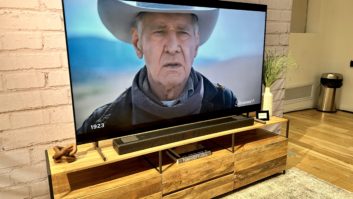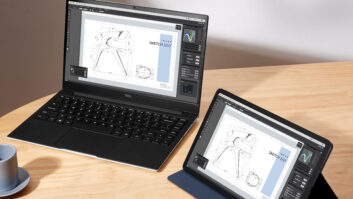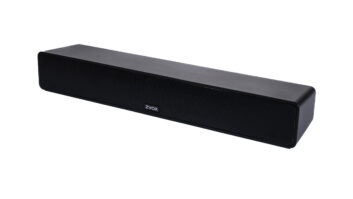LAS VEGAS -Thomson Consumer Electronics and Sony used the eve of CES to show new LCD-based rear-projection TV technologies designed to produce thinner cabinets and brighter picture output.
Thomson presented a lightweight, flat-screen integrated HDTV receiver using a new technology called Liquid Crystal On Silicon (LCOS), which will deliver progressive-scan digital HDTV.
Sony later that same day gave the press a sneak preview of its Grand Wega technology, which has been marketed overseas. The technology uses three 1.05 million-pixel LCD panels and a wide-angle lens design to produce ultra-produce ultra-bright images in the 625i and 768p formats.
Thomson, which was not an official exhibitor at International CES for the first time in years, made its announcement on the eve of the show at the Mandalay Bay Hotel, prior to Sony’s presentation back at the Las Vegas Convention Center. Sony was an official CES exhibitor.
Thomson unveiled the RCA L50000 LCOS TV, which was billed as a 50W-inch 16:9 set that can receive both over-the-air and satellite HDTV signals and will be available this summer for a retail price between $6,000 and $8,000.
The L50000 can function as either a tabletop unit or entertainment center with matching stand. It weighs only about 100 pounds, or 60 percent less than a comparably sized projection TV. With a cabinet depth of just 18 inches, the new RCA Liquid Crystal HDTV has the same depth as a typical 19-inch television, the company said.
The L50000 will display up to 2.76 million actively lit pixels through its “three-imager” matrix display.
High-definition LCOS images are presented without any scanning lines, and the product can deliver HDTV at full progressive 1,260 x 720 resolution, Thomson said.
The set will include integrated tuning and decoding capability for over-the-air ATSC 8VSB digital TV broadcasts and analog NTSC tuning, as well as standard and HDTV DirecTV satellite services.
LCOS is a new microdisplay technology that utilizes reflective light valves called imagers, assembled with other components to form the heart of the HDTV display, called the “light engine.”
White light is generated by an ultra-high-pressure lamp, processed into a laser-like beam through a series of integration optics, and separated into red, green and blue components by a sophisticated optical prism, the company said.
To develop the LCOS technology, Thomson worked with three other companies: ColorLink, Corning Precision Lens and Three-Five Systems.
Ironically, Thomson announced its LCD-based set the same afternoon, before Sony’s new Grand Wega technology made its U.S. debut.
Sony showed a 50W-inch rear-projection Hi-Scan HDTV monitor that also uses a new three-panel LCD technology that allows a thin cabinet design and bright picture output.
The Sony product was offered as a sneak preview of future products. No exact marketing details were available, although Sony is expected to introduce a model this year or early in 2002.
The widescreen Grand Wega model boasts total resolution of 3.15 million (1.05 million per panel) picture brightness, comparable to that of a 36-inch direct-view television. It also features a special tri-component screen. Cabinet depth is said to be 15.12 inches.
Sony also unveiled at the show its largest Hi-Scan Wega HDTV monitor to date. The KV-40XBR700 features a 40-inch 4:3 flat-faced picture tube and is capable of displaying images in the 1080i, 480p and 480i formats.
It also offers Sony’s Digital Reality Creation circuitry to convert analog signals to higher scan formats and Multi Image Driver (MID-X) circuitry that enables displaying two different formats on the screen at the same time.
The 40W-inch set will ship in October and sell for about $4,000.













